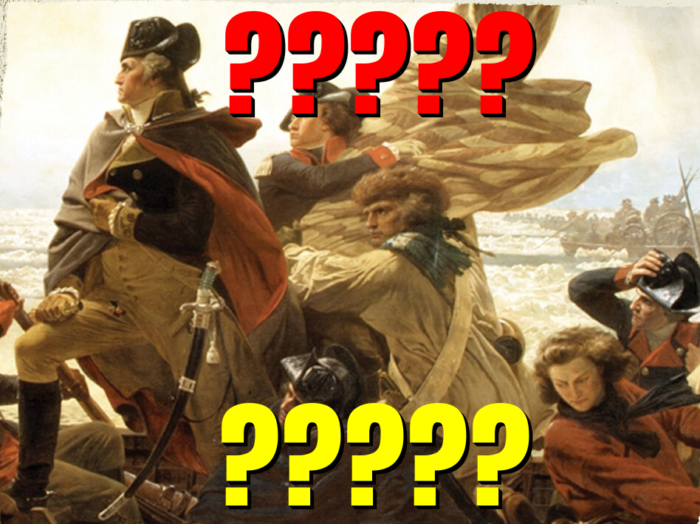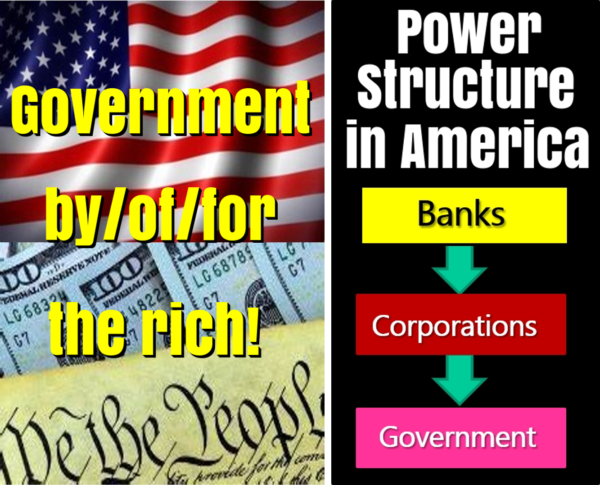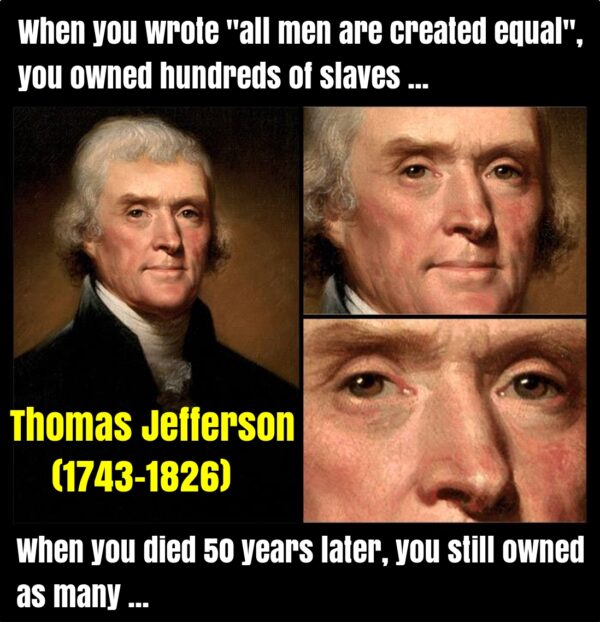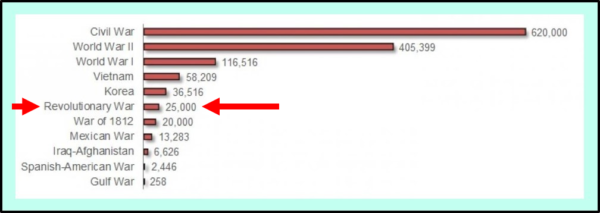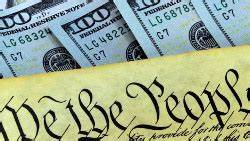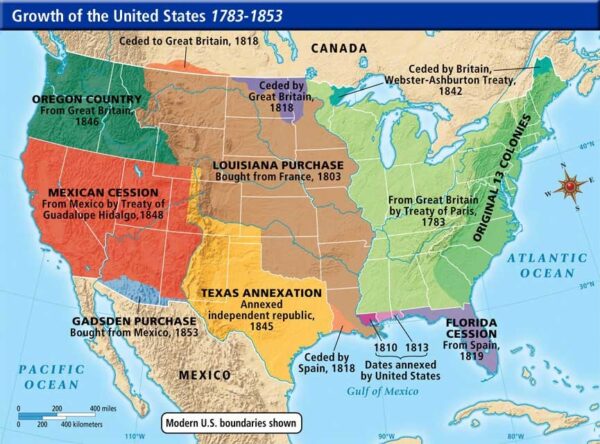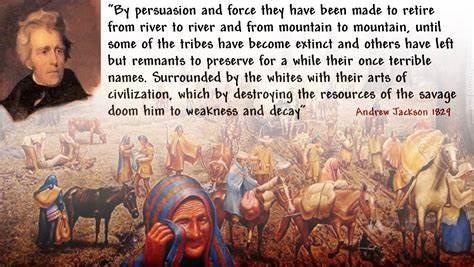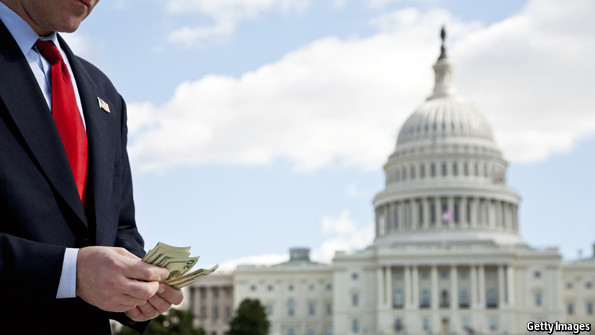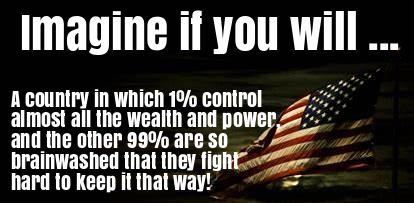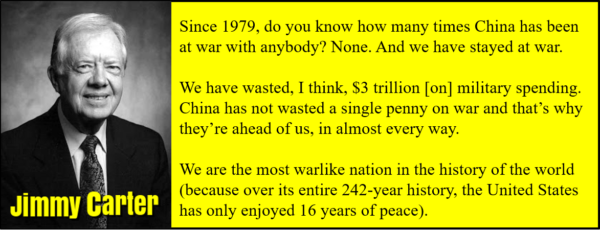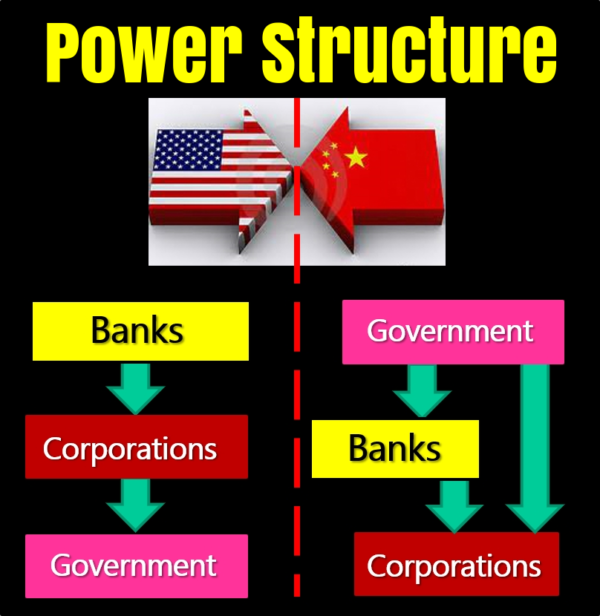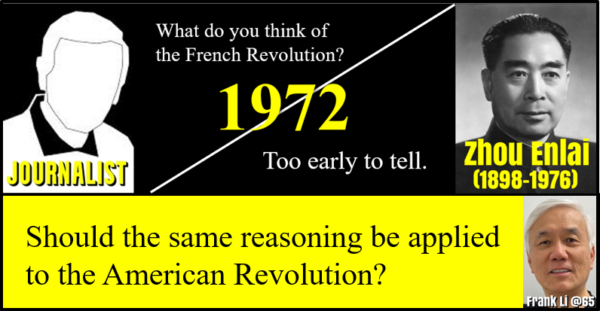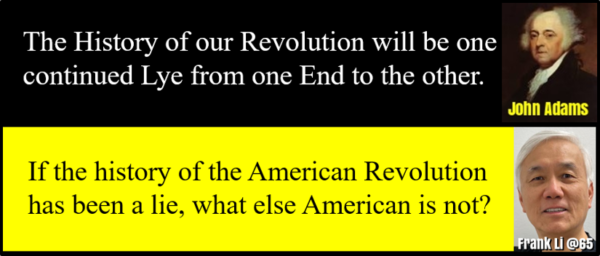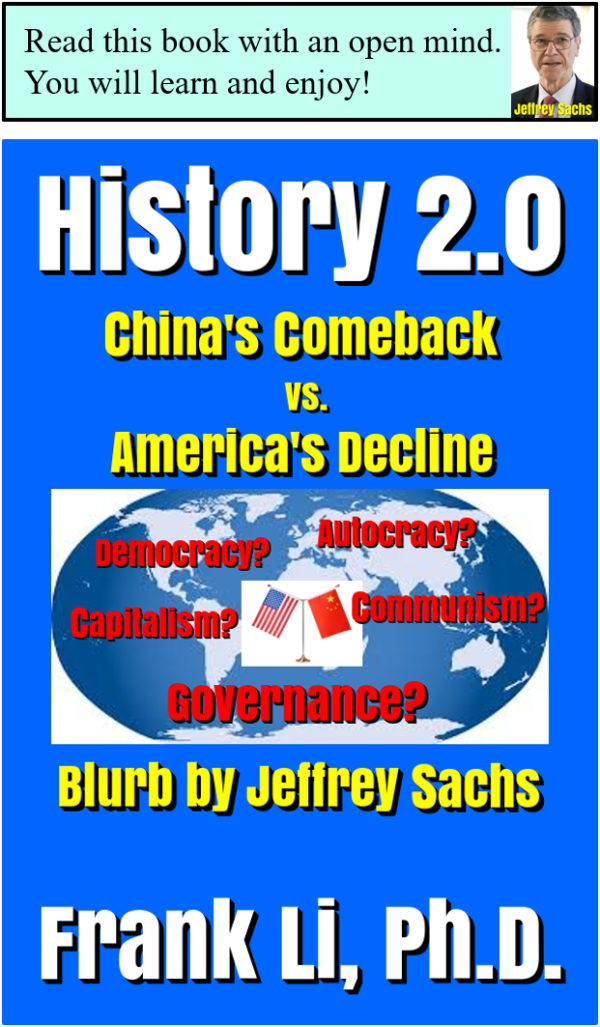The American Revolution was a bourgeois revolution (i.e., by/of/for the rich). As a result of its success, America was born with two distinctive birth defects:
- It was built on a pile of lies, with “all men are created equal” being the mother of all American lies (The American Idea is a lie!).
- Its government was, and still is, by/of/for the rich.
In short, the revolution was real, but most of its purported reasons are lies, just as John Adams pointed out more than 200 years ago!
For more, read Did John Adams say it, really?
1. What is the real reason behind the Revolution?
“Greed” on the part of many [rich] colonists!
Specifically, the [rich] colonists wanted not only to keep more to themselves (instead of paying [more] taxes), but also the possibility of expanding colonialism beyond the original 13 colonies, without Britain!
2. What are the big lies about the Revolution?
Three examples:
- No taxation without representation.
- Against the tyranny of a king.
- “All men are created equal” is the mother of all American lies, as highlighted by the image below.
Still unconvinced?
Look at the image below!
3. Seeking the truth!
The American Revolution was chiefly instigated by a bunch of rich colonists (e.g., Samuel Adams and John Hancock), who simply did not want to pay [more] taxes. They conspicuously hid this real reason behind an eloquent slogan of no taxation without representation.
Here is a famous article: What we get wrong about taxes and the American Revolution. Below is an excerpt.
The article then raises the following question and argues about it.
The truth?
Neither side took it seriously as a make-or-break issue, perhaps?
Here is my unconventional approach: Instead of arguing about what the colonists really wanted before and during the revolution, like many historians have been doing over the past 200 years, let us complement it by (1) looking at what they got after the revolution, and (2) reasoning backward from there, shall we?
4. What led to the Revolution, actually?
Three important events in sequence as follows:
To briefly highlight each …
4.1 Royal Proclamation of 1763
Read Wikipedia – Royal Proclamation of 1763. The image below is a summary.
Bottom line: The proclamation protected the indigenous people from further British colonialization beyond the 13 colonies.
Critical reasoning: This was the first piece of legislation of many that infuriated the colonists. However, it is not even listed as an event in this well-known article: 7 Events That Enraged Colonists and Led to the American Revolution.
Why is that?
It does not fit the desirable narrative, maybe?
4.2 Boston Massacre of 1770
Read Wikipedia – Boston Massacre.
Bottom line: It was not a massacre by any reasonable definition! The rich colonists (e.g., Paul Revere and Samuel Adams), via the media under their control, exaggerated it into a massacre.
4.3 Boston Tea Party of 1773
Read Wikipedia – Boston Tea Party.
Bottom line: In today’s terms, it was a dispute between billionaires and millionaires, with the Federal and local governments taking opposite sides.
5. What happened throughout the Revolution?
Two big events:
- The publication of the United States Declaration of Independence.
- The American Revolutionary War.
To briefly elaborate on each …
5.1 Declaration of Independence
Two informative readings:
5.2 American Revolutionary War
Read Wikipedia – American Revolutionary War.
Simply put, the American revolutionaries (aka “Patriots” in America, but “ungrateful colonists” in Britain) won the war easily, especially in terms of casualties.
Why so easily?
Because it was very much a war of attrition, with one side clearly having huge advantages over the other.
In other words, the British might have been able to successfully fight the war for two to three years. But after it stretched into eight years, they basically gave up.
Very importantly, because it was viewed as a “civil war” in Britain, the British did not go all-out, which was a main reason behind the low American casualties, as well as Britain’s ultimate defeat.
In summary, given the risk and reward, the war proved worthwhile for the American Revolution’s leaders – No guts, no glory!
What about the American soldiers in the war?
As highlighted by the image below, they were no different from those in any other war throughout history.
The American Revolutionary War ended with Britain’s recognition of America in 1783 (Treaty of Paris), thus ending the American Revolution.
Bottom line: The colonists took a modest risk throughout the American Revolution for huge potential gains.
6. What happened after the Revolution?
Three significant outcomes:
- America became a republic, by accident.
- A republic by/of/for the rich was formed.
- America continued colonialism without Britain!
To briefly elaborate on each …
6.1 America became a republic, by accident
It turned out that the colonists did not really dislike the “tyranny of a king”—they just did not like the British King (i.e., George III). After the war, they simply asked George Washington to be their new king. However, Washington refused, making it possible for America to become a republic.
6.2 A republic by/of/for the rich was formed
A republic is, by definition, socialistic because everything is [supposed to be] for the public. America is no exception, except that “the public” meant “the rich” at the time! For example, American slavery is one of the worst forms of socialism: socialism that supports capitalism with free labor.
First and foremost, the rich (e.g., property owners) wanted a government that was by/of/for the rich, with money behind everything, especially in politics. Yes, bribery in politics (e.g., “campaign contributions”) was legal in America!
Secondly, the rich wanted a limited government that would not only leave them alone to become richer (e.g., without paying [more] taxes) but also support them with both socialism (e.g., American slavery) and colonialism (e.g., territorial expansions). They got it!
For more, read Critically Assessing Thomas Jefferson.
6.3 America continued colonialism without Britain!
The image below is worth more than 1,000 words.
With more European migrants enjoying the “land of the free, home of the new”, the indigenous people became much worse off after the American Revolution, because Americans turned out to be much more brutal than the British, even committing genocides against them (e.g., Trail of Tears).
Slavery also became much worse. For example, slave trading was gravely exacerbated after 1783, because of the huge desire for more “free labor”, thanks to the surge in cotton (vs. tobacco) production. It was for this reason, chiefly, that many slaves fought for the British throughout the War of 1812 because the British promised to free them if they won the war (but they did not).
7. Discussion
Time is the best judge of everything, including the American Revolution. Let us look at America today …
Despite all the considerable progress made over the past 230 years, from the Emancipation Proclamation in 1863 to the Voting Rights Act of 1965, America remains essentially unchanged: Today, America is still by/of/for the rich, with moneyed interests behind everything, especially in politics!
What about justice?
Read the image below!
What about the economy?
Read the image below!
What about an informed citizenry?
Read the image below!
For more, read Brainwashing and America.
8. More discussion
Now, let us briefly compare the American Revolution with the French Revolution and the Chinese Communist Revolution, respectively.
8.1 American Revolution vs. French Revolution
- The French Revolution was for the people (mostly poor). It was the beginning of the end of European absolute monarchies, replacing them with republics or constitutional monarchies. So, it was a positive development in humanity. For more, read What is the French Revolution, anyway?
- The American Revolution was for the rich. After becoming a republic by accident, America brutally continued colonization without Britain. Overall, however, was it even a positive development in humanity like the French Revolution? I am not sure. Look at the image below …
Still unconvinced?
Look at the image below!
Bottom line: America may destroy us all as a species by provoking World War III!
8.2 American Revolution vs. Chinese Communist Revolution
- The American Revolution was a bourgeois revolution for the rich, and America remains so today, with money behind everything.
- The Chinese Communist Revolution was a proletarian revolution for the poor. However, over the past few decades, China has transformed itself into a form that is truly for the people (i.e., the rich and the poor), although it is not necessarily by/of the people by the American definition (of voting).
The image below highlights the key difference between the two countries today.
More profoundly, the image below highlights the difference in “power structure” between the two countries today.
For more, read American Revolution vs. Chinese Communist Revolution.
8.3 Summary
Read the image below and think …
9. Still more discussion
Read the image below and think …
For more, read Colonial America 1776-2040?
10. Closing
The American Revolution was real, but most of its purported reasons are lies, with “all men are created equal” being the mother of all American lies.
The real reason behind the American Revolution was “greed” by many [rich] colonists. They built America on a pile of lies!
America, reform our failing political system, as I have suggested (History 2.0 – China’s Comeback vs. America’s Decline), or become a fiddle, second to China!
